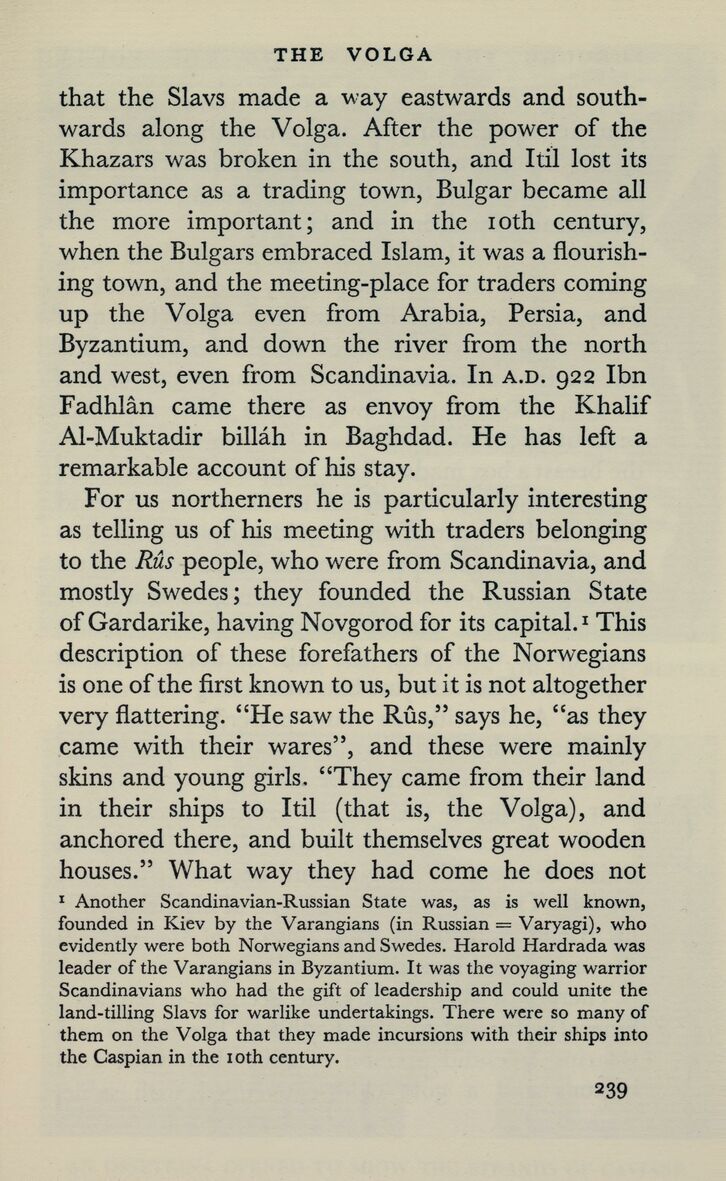
Full resolution (JPEG) - On this page / på denna sida - X. The Volga

<< prev. page << föreg. sida << >> nästa sida >> next page >>
Below is the raw OCR text
from the above scanned image.
Do you see an error? Proofread the page now!
Här nedan syns maskintolkade texten från faksimilbilden ovan.
Ser du något fel? Korrekturläs sidan nu!
This page has never been proofread. / Denna sida har aldrig korrekturlästs.
THE VOLGA
239
that the Slavs made a way eastwards and south
wards along the Volga. After the power of the
Khazars was broken in the south, and Itil lost its
importance as a trading town, Bulgar became all
the more important; and in the ioth century,
when the Bulgars embraced Islam, it was a flourish
ing town, and the meeting-place for traders coming
up the Volga even from Arabia, Persia, and
Byzantium, and down the river from the north
and west, even from Scandinavia. In a.d. 922 Ibn
Fadhlån came there as envoy from the Khalif
Al-Muktadir billåh in Baghdad. He has left a
remarkable account of his stay.
For us northerners he is particularly interesting
as telling us of his meeting with traders belonging
to the Rus people, who were from Scandinavia, and
mostly Swedes; they founded the Russian State
of Gardarike, håving Novgorod for its capital. 1 This
description of these forefathers of the Norwegians
is one of the first known to us, but it is not altogether
very flattering. "He saw the Rus," says he, "as they
came with their wares", and these were mainly
skins and young girls. "They came from their land
in their ships to Itil (that is, the Volga), and
anchored there, and built themselves great wooden
houses." What way they had come he does not
1 Another Scandinavian-Russian State was, as is well known,
founded in Kiev by the Varangians (in Russian = Varyagi), who
evidently were both Norwegians and Swedes. Harold Hardråda was
leader of the Varangians in Byzantium. It was the voyaging warrior
Scandinavians who had the gift of leadership and could unite the
land-tilling Slavs for warlike undertakings. There were so many of
them on the Volga that they made incursions with their ships into
the Caspian in the ioth century.
<< prev. page << föreg. sida << >> nästa sida >> next page >>